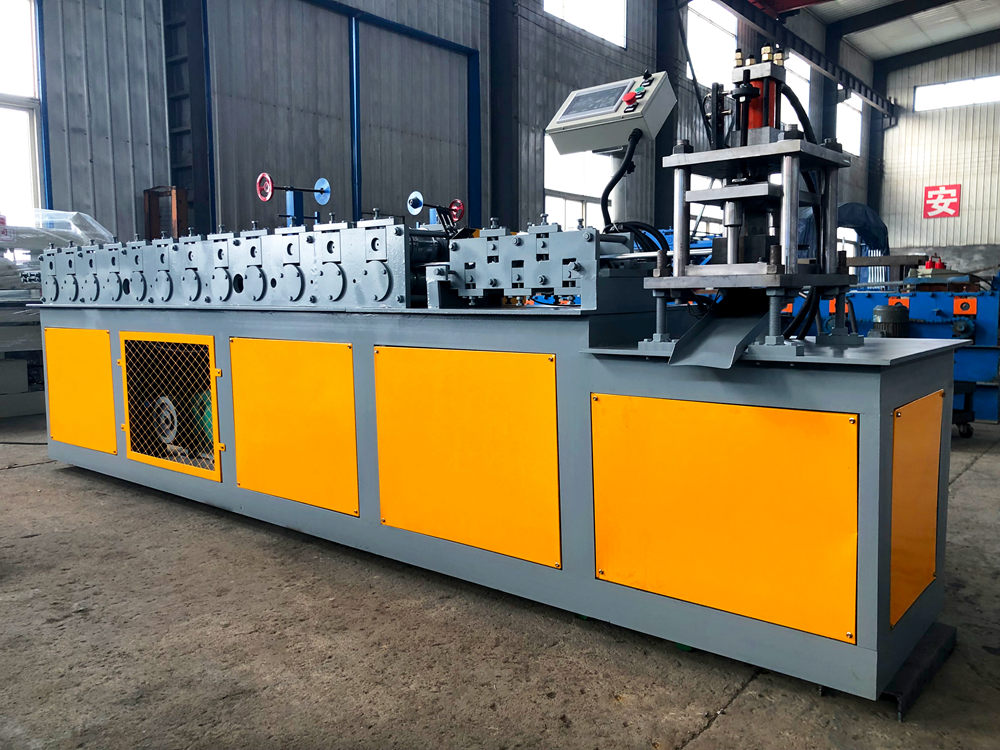
Aluminum Strut Channel Roll Forming Machine An Overview
In the ever-evolving landscape of manufacturing, roll forming technology has emerged as a crucial process for creating various metal components with precision and efficiency. Among the various applications in this field, aluminum strut channel roll forming machines stand out due to their versatility, durability, and the increasing demand for lightweight structural materials in various industries.
Understanding Roll Forming
Roll forming is a continuous bending operation in which a long strip of metal, typically sheet or coil, is gradually shaped into a specific cross-section through a series of rollers. This method is particularly advantageous for producing parts with uniform cross-sections and long lengths. The aluminum strut channel, commonly used in construction and industrial applications, is an ideal candidate for this type of manufacturing.
Benefits of Aluminum Strut Channels
Aluminum strut channels are widely employed in the construction and electrical industries for several reasons. Firstly, aluminum is lightweight, which simplifies handling and installation. Its resistance to corrosion makes it suitable for outdoor and harsh environments, reducing the need for maintenance or frequent replacement. Moreover, aluminum strut channels have excellent strength-to-weight ratios, making them an efficient solution for supporting various loads.
The channels can be used in a myriad of applications, including mounting systems, framework for ventilation, and supports for electrical conduits. Their modular nature enables easy integration into existing systems, which is essential for customization and adaptability in modern construction projects.
The Roll Forming Process for Aluminum Strut Channels
The production of aluminum strut channels through roll forming involves several key steps

1. Material Preparation The process begins with unwinding a coil of aluminum, typically of a specific alloy suitable for structural applications. The thickness and mechanical properties of the aluminum are selected based on the intended application of the strut channel.
2. Roll Design Custom-designed rollers are used to shape the aluminum into the desired channel profile. These rollers are arranged in sequence, with each set progressively bending the material until the final profile is achieved. The design of the rollers is crucial as it directly affects the dimensional accuracy and surface finish of the channels.
3. Forming Operation As the aluminum strip passes through the rollers, it is carefully shaped into the strut channel profile. The process is continuous, allowing for high production rates and minimal waste. With modern technology, CNC controls are often employed to ensure precise alignment and operation of the forming equipment.
4. Cutting and Finishing Once the channel is formed, it is cut to the required lengths using automated cutting systems. Additionally, finishing processes such as deburring, anodizing, or painting can be applied to enhance the aesthetics and corrosive resistance of the channels.
5. Quality Control Throughout the manufacturing process, rigorous quality control measures are implemented to check the dimensions, strength, and surface quality of the final product. This step ensures that the aluminum strut channels meet industry standards and customer specifications.
The Future of Aluminum Strut Channel Roll Forming Machines
As industries continue to pivot towards sustainability and operational efficiency, the demand for aluminum strut channels is expected to rise. Consequently, roll forming technology will evolve to accommodate more complex profiles and provide enhanced features, such as integrated fastening solutions and advanced automation systems.
In conclusion, aluminum strut channel roll forming machines play a vital role in modern manufacturing, enabling the production of high-quality components that serve critical functions in various sectors. Their capacity for high-volume production, combined with the inherent advantages of aluminum, positions them as a cornerstone technology for future developments in construction and beyond. As innovation in machinery and materials progresses, the impact of these roll forming machines will undoubtedly shape the landscape of industrial applications for years to come.